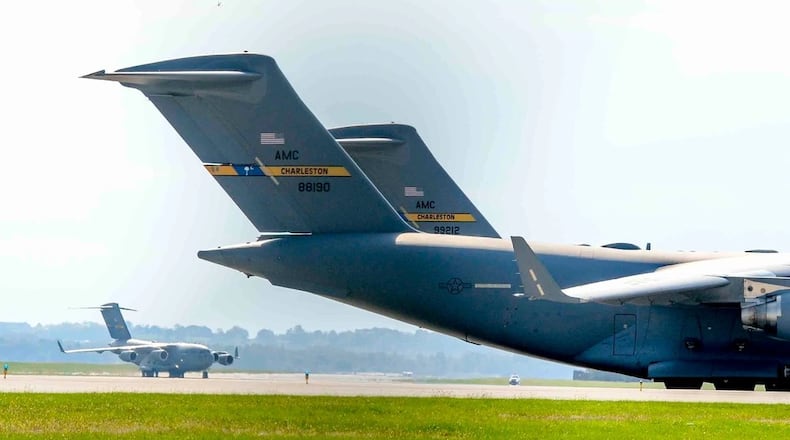Wright-Patterson at the moment has one flying mission, the 445th Airlift Wing. Its runway probably would not be considered a high-traffic runway, said Jeff Hoagland, president and chief executive of the Dayton Development Coalition, which has made protecting the base and its missions its primary focus.
That doesn’t mean the runway isn’t important to the base or the Air Force, Hoagland added. But the Air Force simply doesn’t have all the money it needs for all of its pressing infrastructure demands, he said.
Construction spending in the military is always a two-phase approach, Hoagland noted. First, there must be spending on engineering and design work. Then come dollars for construction.
“Having a runway, I think, is very critical, especially for a base like Wright-Patterson Air Force Base, with so much work that they do that contributes to the national defense,” Hoagland said. “We support the Air Force’s efforts to sustain and modernize the infrastructure that helps those missions.”
While Col. Dustin Richards, commander of the 88th Air Base Wing, was not available for an interview on the subject, Wright-Patterson did release a statement from Amir Mott, deputy director of the 88th Civil Engineer Group. The 88th Air Base Wing is responsible for the sprawling Air Force base’s many infrastructure and security needs.
Wright-Patterson’s runway was constructed in 1947 with a concrete landing surface. It has seen decades of successful service, Mott said.
The runway has since been overlaid with an asphalt wearing surface in an effort to prolong its useful life.
“Presently, the condition of the runway has reached critical condition, necessitating ongoing maintenance and repair, and (it) is in need of replacement,” Mott said in his statement.
“Until funding for replacement is provided, 88th Air Base Wing ensures that the runway remains fully operational and accessible for all flying missions. Our dedicated airmen prioritize safety and upkeep to guarantee that no missions are compromised, regardless of weather or operational conditions.”
The runway is used by more than the 445th’s big C-17 Globemasters. Wright-Patterson often hosts visits from regional and national leaders. When there are evacuations from hurricanes, Wright-Patt is often a safe place to land for Air Force units from other areas.
U.S. Rep. Mike Turner, R-Dayton, is a senior member of the House Armed Services Committee who has the ear of base leaders and vice versa. In an interview, he said is aware of the runway’s needs.
“The runway is going to be challenging because it has significantly deteriorated and it’s a high-cost item,” Turner said.
“That runway is essential for the functions at Wright-Patt, but it doesn’t have a high-traffic volume. Many other bases that have a high-traffic volume rate higher in priority.”
Said Hoagland: “The Air Force does not have enough money to address all of their needs.”
Turner agreed that the runway can’t be permitted to degrade further or “it will impact significant operations at the base.”
How the final NDAA spending packages come together remains to be seen. Months of work are ahead.
The House and the Senate each shape their own versions of the annual defense spending and policy bill, and they are then reconciled by a conference committee made up of members of both chambers. Then the reconciled package heads to President Biden for his signature.
Meanwhile, the House and Senate are also separated on another possible big-ticket infrastructure project at the base — a new building devoted to the Space Force’s National Space Intelligence Center (NSIC).
Again, the Senate draft NDAA bill directs funds toward design work for such a building, but the House package does not.
Turner sees such a building as a great potential “follow-on” to the $200 million new home for the National Air and Space Intelligence Center (NASIC), which saw a ribbon cutting at Wright-Patterson this past May.
Today, NASIC and the NSIC — two agencies of growing importance to national security — share that new building.
Said Turner: “We’re going to have to be fighting to secure funding for a facility, for NSIC at Wright-Patt. This is going to be a several-year focus, and a great opportunity to secure that mission and its future.”
The NASIC building was six or more years in the making. Look for a similar timeline here, for design and construction, Turner advised.
About the Author


